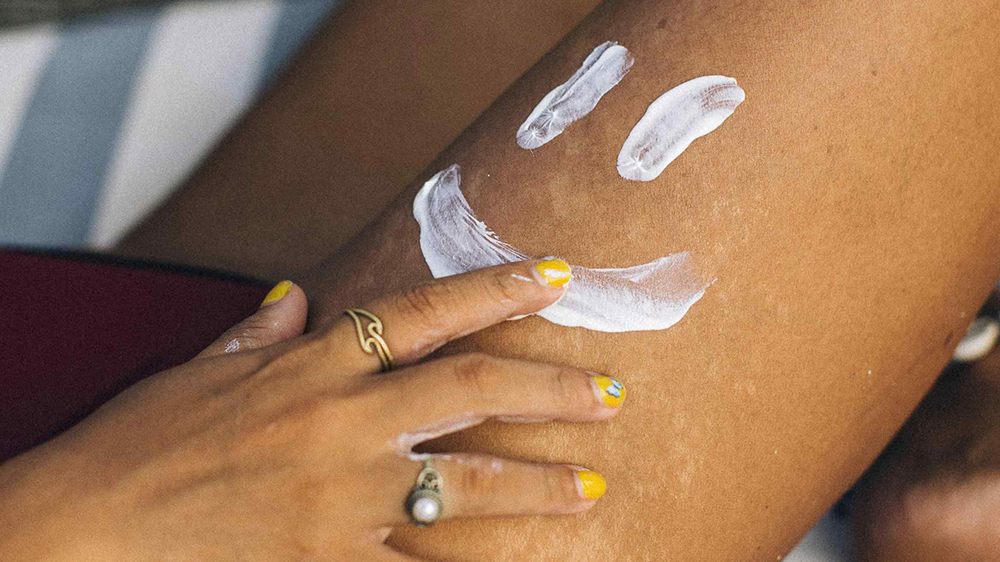Sunscreen isn’t just a summer fling – it’s a lifelong commitment. And yet, there are still so many misconceptions that persist about when, where, how much and what type to use, leaving our skin vulnerable to unnecessary damage. From UV rays sneaking through clouds to the myths surrounding SPF numbers, understanding the facts can help you avoid sunburn, premature aging, and more serious risks like skin cancer.
Whether you’re lounging poolside this summer or simply running your daily errands, understanding these misconceptions and myths is vital and could save your skin in the long run. When it comes to protecting the skin from damaging sun rays that can lead to sun poisoning, blisters and cancer – sunscreen is still your best line of defence.
So, let’s separate fact from fiction and debunk some of the most common sunscreen myths so you can protect your skin over the coming months.
Myth 1: Sunscreen Is Only for Sunny Days
Think clouds are your shield? Think again. Sun damage is caused by ultraviolet (UV) radiation, which can penetrate through clouds, fog and even glass. So, with 90% of UV rays passing through clouds, this means that UV rays can harm your skin on overcast days or even when you’re indoors near a window.
In fact, they can actually be more intense thanks to the reflection. So with 90% of UV radiation passing through clouds, making sun protection essential even on grey, overcast days.
The takeaway? Get into the habit of applying your SPF as the last step in your morning skincare routine – rain hail or shine – and regardless of whether you plan to leave the house or not.
Myth 2: All Sunscreens Created Equal
Although all sunscreen have the same goal in protecting your skin from sun damage, there are different formulas, each working slightly differently, depending on ingredients and level of sun protection. Generally speaking, sunscreen can be broken down into 2 primary types: physical and chemical. Both types work effectively, but your choice should depend on your skin type, preferences, and how long you’ll be exposed to the sun.
- Physical sunscreens (otherwise known as mineral sunscreens) contain ingredients such as zinc oxide and titanium dioxide, work by creating a barrier on the skin that reflects UV rays.
- Chemical sunscreens (with ingredients like avobenzone or oxybenzone) absorb UV rays and convert them into heat that’s then released from your body.
Myth 3: Sunscreen Is Just for Your Face
Your face might get all the skincare love, but UV rays don’t discriminate. Areas like your neck, hands, and arms are just as prone to sun damage and premature aging.
Make it a habit to cover all exposed skin. A good rule of thumb? If it sees the sun, it needs SPF.

Myth 4: Darker Skin Doesn’t Need Sunscreen
While melanin does provide some natural UV protection, it’s not enough to prevent sun damage, prevent UV-induced harm or reduce the risk of skin cancer.
Everyone, regardless of skin colour or skin tone should wear sunscreen daily, to prevent photo-ageing, hyperpigmentation, premature aging, and serious conditions like melanoma. Sun safety is universal.
Myth 5: Higher SPF Means Complete Protection
It’s tempting to think SPF works like a magic shield, making you impervious to the sun’s rays, with a common misconception being the more you slather on, the more protected you will be from the sun’s exposure.
The truth is, SPF doesn’t block UV rays entirely and it’s important to remember that no sunscreen can give you complete protection against the sun, nor shield you from the UV rays entirely.
Instead, sunscreen works by extending your skin’s natural burn time, so while you may feel “protected,” it doesn’t mean you’re entirely shielded or protected.
You would think the higher the number, the more protection you get and it’s easy to assume that SPF 50+ means you’re covered all day. While higher SPF does provide more protection, it doesn’t mean you can skip reapplying.
Truthfully, no sunscreen offers 100% protection. SPF 50 blocks about 98% of UV rays, while SPF 100 blocks just 99% – a marginal difference.
More importantly, high SPF often gives people a false sense of security, leading to overexposure. Sunscreen effectiveness also diminishes with time, sweat, and environmental factors, so frequent reapplication is key.
Myth 6: One Morning Application Is Enough
Applying sunscreen once in the morning doesn’t provide all-day protection. Sweat, makeup, and general wear break down its effectiveness, leaving your skin exposed.
To ensure your skin stays protected all day, reapply every two hours to ensure effectiveness. If you wear makeup, invest in a setting spray with SPF or a powder sunscreen to carry in you bag for touch-ups throughout the day.

Myth 7: SPF in Makeup or Moisturizer Is Enough
Just because your makeup, moisturiser or other skincare product claims to have SPF you should definitely not be relying solely on it for your daily protection and it’s not a replacement for a dedicated sunscreen. These products typically don’t offer the broad-spectrum coverage or durability needed to guard against UV damage fully.
Instead, think of SPF in cosmetics as an additional bonus layer, not a replacement for a dedicated sunscreen. For proper protection, layer your sunscreen underneath your makeup, and choose a minimum SPF of 50+ – especially here in New Zealand where our sun is extra harsh.
When testing, skincare companies test with thick layers of the product to determine the SPF. In practice, you’re probably not getting all the SPF on the bottle if you only apply a thin layer of the product.
In short? There’s just way too much variation in how people apply these products to say it’s enough. So, whilst makeup and other products with SPF is a nice addition, they are not a replacement for sunscreen.
Yes, there are plenty of treatments on the market to assist with reversing sun damage like IPL machines, LED light therapy machines and Microneedling however you still need to protect your skin from the harmful UV rays and sunscreen is still your best line of defence.
Myth 8: Water-Resistant Sunscreen Is Waterproof
Here’s the thing: water-resistant does not mean waterproof and water will always wash sunscreen from the skin.
Before swimming, apply sunscreen 15 minutes in advance to allow it to bond with your skin. And after a dip, always reapply – even if the label says water-resistant.
No sunscreen can fully withstand water exposure indefinitely and whilst water-resistant sunscreens protect you for about 40 to 80 minutes in the water (depending on the label), they lose effectiveness after a certain amount of time.
After swimming or sweating, reapply immediately to ensure continuous protection. Whether you’re hitting the beach or lounging poolside, reapplication every 2 hours is non-negotiable, even if you haven’t gotten in water.
Myth 9: Sunscreen Blocks Vitamin D Absorption
Worried about missing out on Vitamin D? Rest easy – research shows that using sunscreen doesn’t completely block your body’s ability to produce this essential nutrient as we still get enough through incidental exposure.
It’s important to balance sun protection with maintaining adequate vitamin D levels through diet or supplements. Plus, relying on the sun for vitamin D can be risky, prolonged sun exposure does not cause vitamin D levels to rise further but does increase the risk of skin cancer.

Myth 10: A Fake Tan Protects You from UV Rays
A self-tanner might give you a bronzed glow, but it doesn’t offer UV protection – unless it’s specifically formulated with SPF (and even then, it’s not a substitute for sunscreen).
Think of your faux tan as an aesthetic boost, not a shield. Always pair it with a high-quality sunscreen to protect your skin.
Final Word: Stay Sun Smart All Year
Protecting your skin from UV damage is more than a beauty routine – it’s a lifelong investment in your health. By debunking these myths and incorporating sunscreen into your daily skincare ritual, you’ll not only reduce your risk of premature aging but also safeguard against more serious concerns like sunburn and skin cancer.
Yes, there are plenty of treatments on the market to assist with reversing sun damage like IPL machines, LED light therapy machines and skin needling pens however you still need to protect your skin from the harmful UV rays and sunscreen is still your best line of defence.
The bottom line? Sunscreen isn’t seasonal – it’s a year-round essential.
This article is in partnership with beauty salon suppliers, The Global Beauty Group. To learn more about LED light therapy machines, micro needling pens or any of the other technology mentioned in this article or to find a treatment provider in your area, visit their website.






